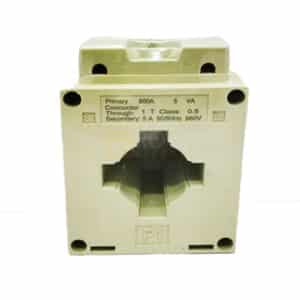CURRENT TRANSFORMER A QUALITY MES 100
A current transformer (CT) is a type of transformer that is used to measure electrical currents. It is designed to produce an alternating current in its secondary winding that is proportional to the current flowing in its primary winding.
CTs are commonly used in electrical power systems to measure the current flowing in high-voltage transmission lines and to provide a convenient way to monitor and control the flow of electricity. They are also used in protective relays, which are devices that automatically disconnect a circuit when an abnormal condition is detected.
There are several types of current transformers, including window-type CTs, bushing CTs, and bar-type CTs. The type of CT used depends on the specific application and the characteristics of the electrical circuit in which it will be used.
Some key features of CTs include:
High current ratio: CTs have a high current ratio, which means that the secondary current is much smaller than the primary current. This allows them to safely measure large primary currents without the need for heavy, expensive conductors.
Low voltage ratio: CTs have a low voltage ratio, which means that the secondary voltage is much smaller than the primary voltage. This helps to reduce the risk of electrical shock when working with high-voltage circuits.
High accuracy: CTs are designed to be highly accurate, with an accuracy rating of typically ±1% or better.
High frequency response: CTs have a high frequency response, which means that they are able to accurately measure high-frequency currents. This is important in modern power systems, which often operate at high frequencies due to the use of power electronic devices.













